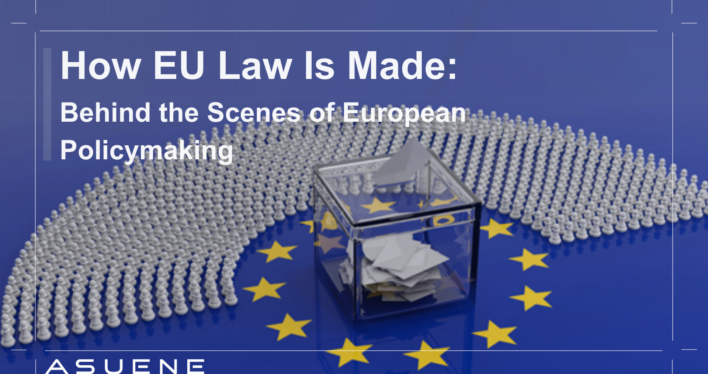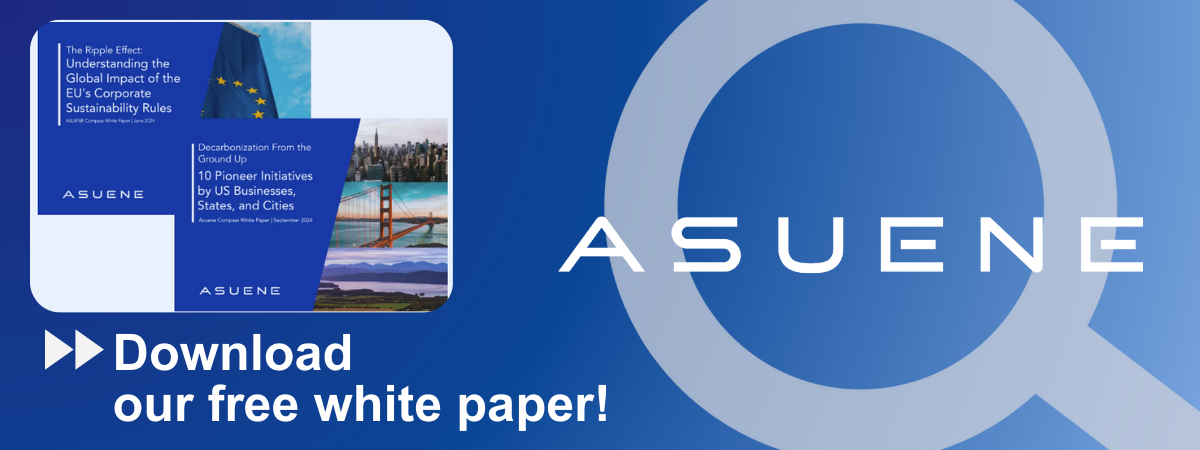- Article Summary
-
The European Union is not just a union of 27 countries—it is a legal and political project built on consensus, negotiation, and complexity. One of the most fascinating (and sometimes opaque) aspects of the EU is how laws are actually made. Far from a top-down bureaucracy, EU lawmaking is a multi-stage process involving governments, elected officials, civil society, and citizens themselves.
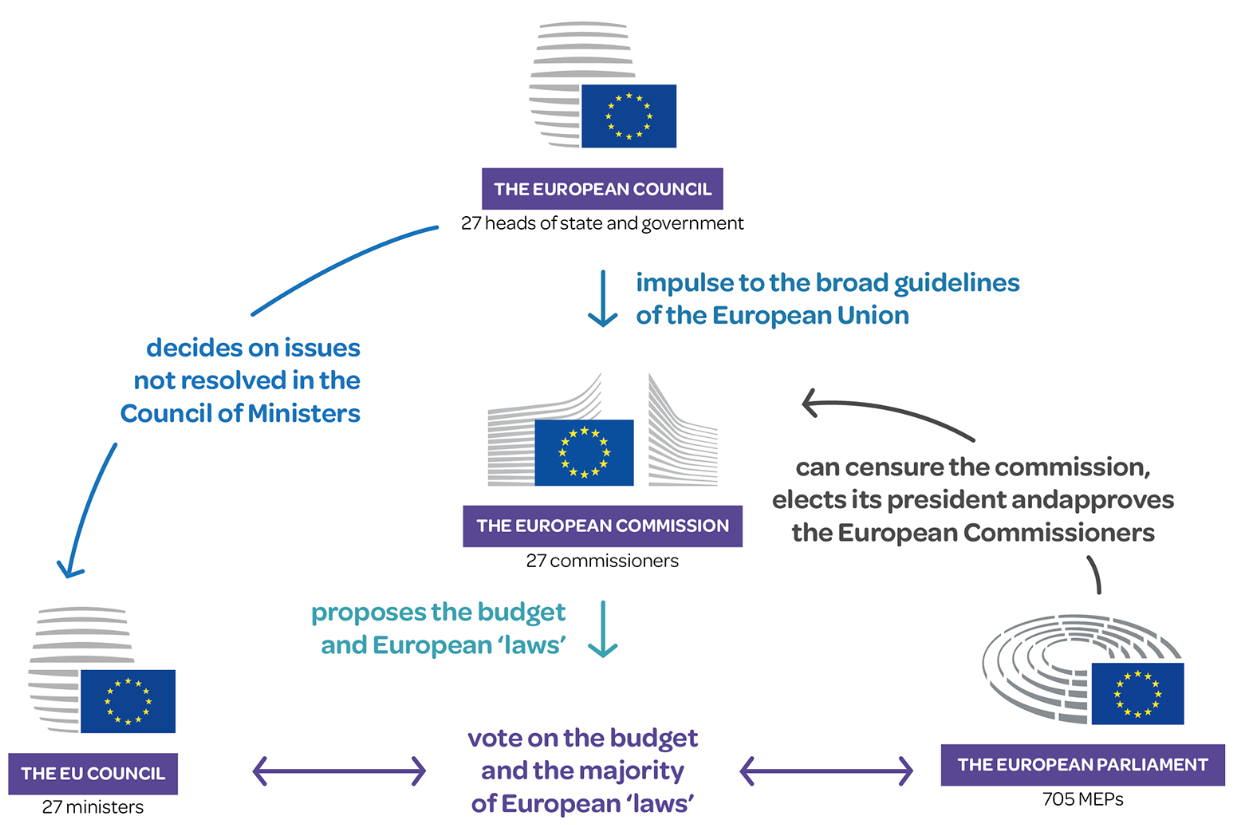
In this article, we’ll walk through each phase of the EU legislative process—not just what happens, but also what’s at stake, what kind of political debates emerge, and how power is balanced across institutions.
Overview: How the EU Legislative Process Works
At its core, EU lawmaking is a five-stage process involving three main institutions:
- The European Commission, which drafts and proposes legislation
- The European Parliament, directly elected by EU citizens
- The Council of the European Union, representing member state governments
The process begins with policy preparation and consultation, followed by a formal legislative proposal. The proposal then enters a negotiation phase between Parliament and Council, possibly requiring multiple readings. If disagreements persist, a conciliation committee resolves the final terms before the law is adopted and published.
Depending on the policy area, special legislative procedures may apply, limiting the role of one institution. Throughout, public input and civic engagement play an increasingly important role.
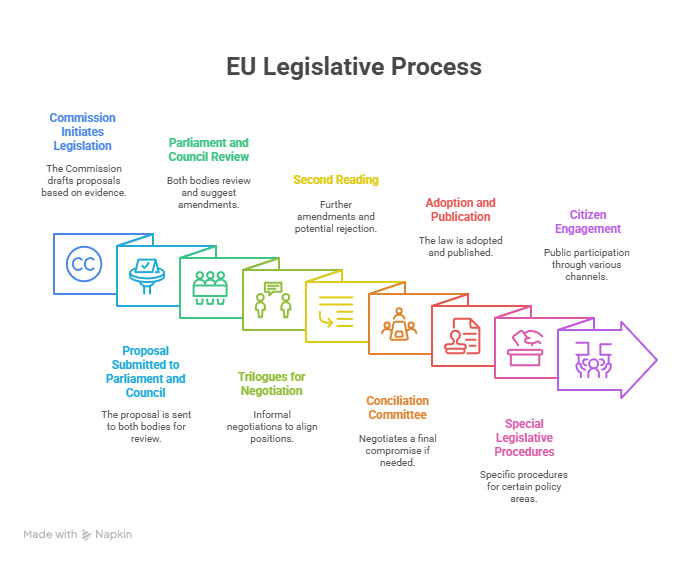
Now let’s explore each phase in detail—including the key arguments and political dynamics involved.
Phase 1: Preparation & Drafting
Lead actor: European Commission
EU law begins not in the Parliament or Council, but with the European Commission—the executive body that holds the exclusive right to propose legislation. At this stage, the key question is:
Is there a real need for EU-level action?
The Commission conducts:
- Impact assessments on economic, environmental, and social dimensions
- Public consultations via Have Your Say
- Workshops and expert panels to gather technical insights
- Fitness checks to evaluate whether existing laws are working
Typical debates:
- Subsidiarity: Is this issue best solved at the EU level, or should it remain national?
- Competence creep: Is the Commission overstepping its powers?
- Regulatory burden: Will this proposal impose unnecessary compliance costs?
National parliaments also have a say here. Through the so-called “yellow card” procedure, they can issue a warning if they believe the EU is overreaching.
Phase 2: Legislative Proposal
Lead actor: European Commission
Once the groundwork is done, the Commission drafts and formally submits a proposal for legislation to both:
- The European Parliament (directly elected representatives of EU citizens)
- The Council of the European Union (ministers from each member state)
What’s debated here:
- Scope of the proposal: Is the law too broad or too narrow?
- Legal basis: Under which treaty article is the law being proposed?
- Form of the act: Regulation (binding directly) or directive (requires national implementation)?
This is when the proposal first becomes public and political.
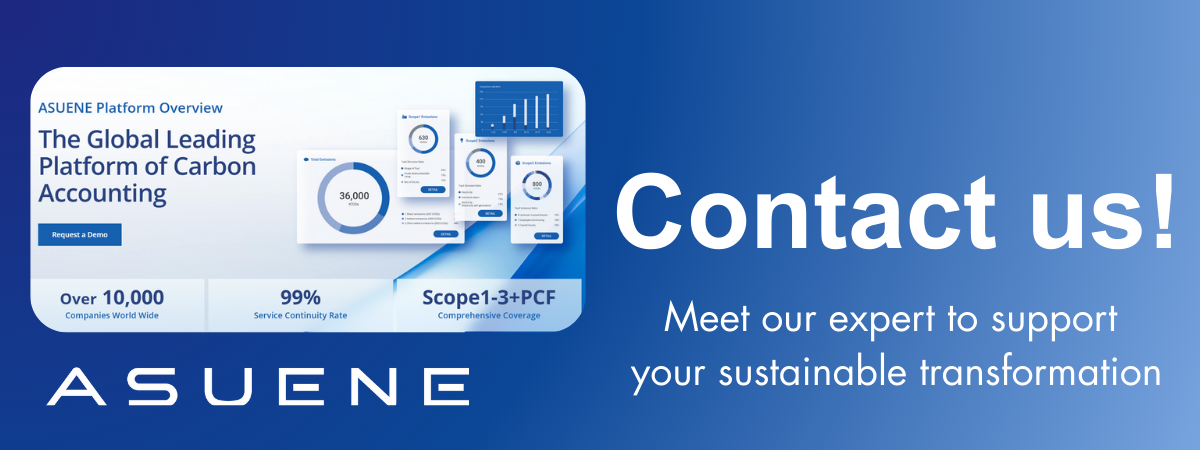
Phase 3: Review & Amendment
Lead actors: European Parliament & Council of the EU
Here begins the “co-decision” phase (now known as the ordinary legislative procedure). Both the Parliament and the Council must agree on the same text.
Real dynamics:
- Amendment wars: Dozens, sometimes hundreds, of amendments are proposed.
- Trilogues: Informal negotiations between Commission, Parliament, and Council to find compromises.
- Institutional tug-of-war: Parliament may want stronger environmental rules; Council may prefer industry-friendly versions.
If the Council believes the Parliament’s changes alter the proposal too much, it can push back. The Commission may even withdraw the proposal if it no longer resembles the original intent.
Phase 4: Second Reading
Lead actors: Parliament & Council (again)
If the first reading doesn’t result in a compromise, the second reading begins. This phase is more rigid: timelines are shorter, and stakes are higher.
What’s at stake:
- Parliament can block the law outright (a political statement).
- Council needs a qualified majority to adopt or amend further.
This stage often triggers intense lobbying from all sides—NGOs, industry, and national governments push hard for final changes.
Phase 5: Conciliation & Final Adoption
Lead actors: Conciliation Committee
When disagreement persists, a Conciliation Committee made up of equal numbers of MEPs and Council representatives is convened. They negotiate a joint text, often late at night, behind closed doors.
The compromise zone:
- Last-minute deals: Often, small wording changes resolve big policy differences.
- Political trade-offs: Concessions in one file for gains in another (“vote trading” across legislation).
Once the joint text is agreed:
- Parliament and Council must both approve it without changes.
- It becomes EU law, and is published in the Official Journal.
Special Procedures: When the Rules Change
Not all legislation follows the same path. In certain areas (e.g., competition, taxation, foreign affairs), the EU uses special legislative procedures:
- Consent: Parliament can approve or reject, but not amend (e.g., treaty ratification).
- Consultation: Parliament gives an opinion, but the Council decides (used less frequently).
These procedures often spark criticism about democratic legitimacy, especially when Parliament has little say.
Citizens Matter: Public Participation in EU Law
You don’t need to be a politician to have a say in EU law.
You can:
- Join public consultations
- Launch or sign a European Citizens’ Initiative
- Submit a petition to the European Parliament
- Vote in European Parliament elections
Today, transparency and civic engagement are pillars of EU policymaking. Platforms like EUR-Lex and OEIL make it easier than ever to follow the process.
Final Reflection
EU lawmaking is not merely a legal formality—it is a political process, shaped by competing visions for Europe’s future. From climate action to digital regulation, these decisions affect millions of people, and they are the product of intense debate, expert input, and—yes—compromise.
In Brussels, every word in a law has a lobbyist, a lawyer, and a political story behind it.
Understanding the mechanics of how EU law is made gives us insight into how power flows through Europe—and how citizens can influence it.
Why Work with ASUENE Inc.?
Asuene is a key player in carbon accounting, offering a comprehensive platform that measures, reduces, and reports emissions, including Scope 1-3, with expertise in decarbonization. Asuene serves over 10,000 clients worldwide, providing an all-in-one solution that integrates GHG accounting, ESG supply chain management, a Carbon Credit exchange platform, and third-party verification.
ASUENE supports companies in achieving net-zero goals through advanced technology, consulting services, and an extensive network.
